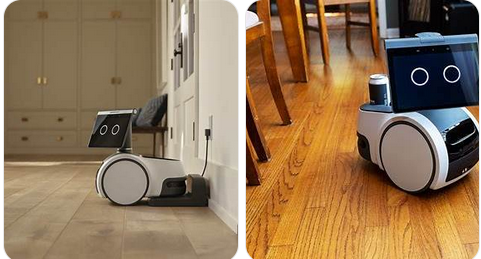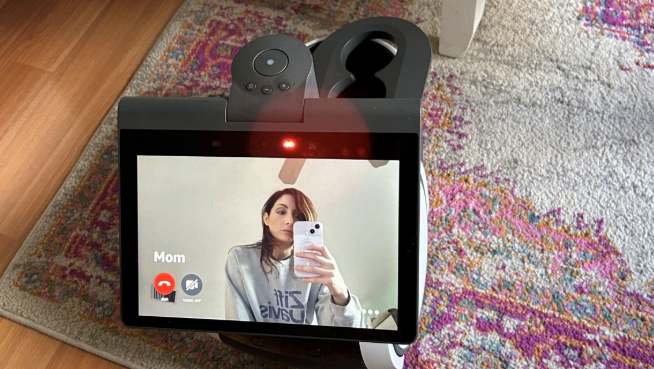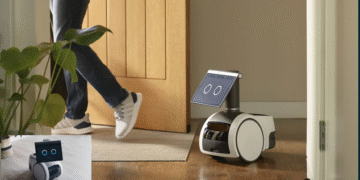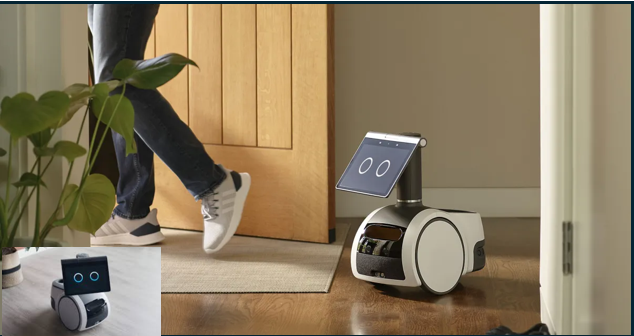Amazon’s Astro 2025 edition blends Alexa with mobile AI. Learn how the home robot performs as a rolling guard, pet camera, and family assistant—with pros, cons, and full verdict.
Meet Astro: Alexa on Wheels
When Amazon first launched Astro, it turned heads—a friendly robot with eyes on a tablet and the personality of a cartoon assistant. Two years later, the 2025 version feels more mature. It now integrates Alexa voice intelligence, Ring home security, and on-device AI navigation, all in a small rolling form that follows you around the house.

Astro’s design remains lovable—a rounded body, expressive digital eyes, and a telescoping periscope camera that extends to peek over furniture. Under the charm lies serious tech: AI mapping, autonomous patrols, and voice-driven smart-home control. Think of it as your personal assistant that actually moves.
Real-World Use: Life with Astro
In daily life, Astro shines as a home monitor and companion. During work hours, it patrols, checking rooms and alerting you via app if it detects unrecognized movement or sound. When you’re home, it doubles as a mobile Alexa—playing music, reading recipes, or delivering video calls as it follows you from room to room.
For pet owners, Astro’s Live View mode and two-way talk let you check on furry friends while away. The robot’s AI differentiates between people, pets, and objects, navigating gracefully around furniture. And with the new “Household Zones” feature, you can assign specific patrol routes or restrict access to private areas.

Benefits That Matter
The magic of Astro lies in mobility and personality. Unlike stationary smart speakers, it adapts to your environment, extending smart home features across multiple rooms. Its integration with Ring security turns it into a moving sentry—responding to alerts, following unusual sounds, and even recording short video snippets for cloud review.
Its voice-first control remains Alexa’s strength: set reminders, control lights, lock doors, or get news—all while Astro rolls alongside you. The tablet face gives emotional presence, making interactions feel natural, not mechanical.
Drawbacks and Challenges
Astro’s biggest limitation is price vs. practicality. At around $1,600, it’s an expensive experiment for what still feels like an evolving category. Battery life hovers around two hours, after which it auto-docks to charge. It also requires strong Wi-Fi coverage to roam reliably.
Privacy-conscious users may be wary of a camera-equipped robot that records and stores data, even with Amazon’s encryption assurances. And though its navigation is much improved, it can still get confused in very dark or cluttered environments.
Pros and Cons
Pros: charming design; excellent Alexa integration; improved patrol AI; flexible home security functions; great pet and child interaction; good app ecosystem.
Cons: expensive; limited battery; requires stable Wi-Fi; still niche; privacy concerns for some users.
Verdict & Star Ratings
| Category | Rating | Notes |
| Design & Personality | ★★★★★ | Friendly, intuitive, and family-safe. |
| Navigation & AI | ★★★★☆ | Reliable, with occasional dark-room hiccups. |
| Features & Security | ★★★★☆ | Strong Ring/Alexa integration; good updates. |
| Battery & Connectivity | ★★★☆ | Needs frequent recharges; Wi-Fi critical. |
| Value | ★★★☆ | Premium price for early adopters. |
Bottom Line: The 2025 Amazon Astro feels more purposeful—less prototype, more partner. It’s still not for everyone, but for tech-forward families and Alexa power users, it brings a level of mobility and warmth that static devices can’t match.
















